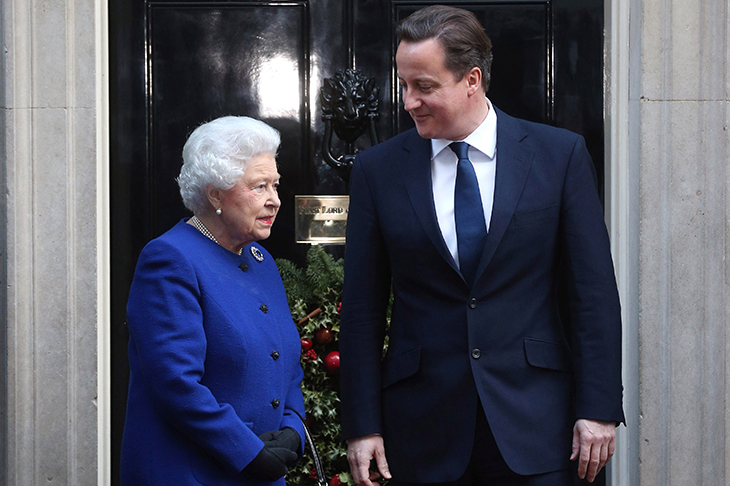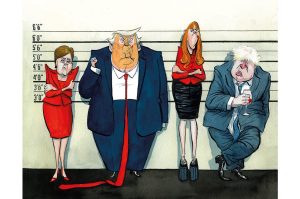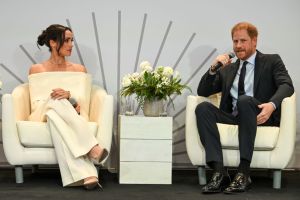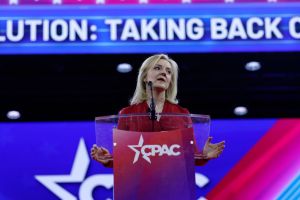David Cameron’s revelation that he sought ‘a raising of the eyebrow’ from the Queen during the 2014 Scottish referendum campaign has caused conniptions at the Palace. But it has also eclipsed the royal record of the prime minister who did more to reform the monarchy than any of the Queen’s 14 (and counting) British PMs during this reign — Churchill included. It was Mr Cameron and his chancellor who tore up the 250-year-old Civil List, the moth-eaten system for funding the monarchy, and devised an annual grant pegged to Crown Estate revenues. It was also Mr Cameron who rewrote the laws of succession. Since 1979, there had been 13 failed parliamentary attempts to change a system which enshrined male primogeniture and a ban on marrying Catholics. Even Tony Blair dodged the issue, arguing that it was a ‘complex undertaking’ involving too many countries. Cameron sorted it out in a single afternoon at the 2011 Commonwealth summit. His new book, For the Record, is modest on this, merely observing that the new funding formula was ‘a generous settlement’. The Queen’s relationship with Tony Blair might have made an Oscar-winning film. I sense future historians will be more interested in her dealings with David Cameron.
The UK Supreme Court has un-prorogued parliament but the Queen’s speech is still (so far) in the diary for next month. After this mess, she will not be turning up in day dress, as she did last time. Expect the full show — robes, jewels and carriages — to underline the correct constitutional order of things. One tweak, perhaps. The Imperial State Crown is like a 2lb bag of sugar on one’s head. No one will begrudge the Queen a (lightweight) diadem.
Every now and then, a royal documentary is granted brief access to that private weekly encounter between monarch and PM. I have always been struck by the lack of small talk and the speed with which they get down to serious business. During the Queen’s Diamond Jubilee year, I was with a film crew blending in with the Balmoral wallpaper when David Cameron walked in to the Queen’s sitting room. Monarch and minister were quickly deep in conversation about murder. Mr Cameron had been in Manchester after the killing of two female police officers. ‘Just the most hideous awful case,’ he said, noting the links to organized crime gangs. The Queen had clearly been fully briefed. ‘It was dreadful,’ she said. ‘And two unarmed ladies…’ She was particularly alarmed that the killer had ‘lured’ the officers in to an ambush. At which point, our time was up. Sadly, most of their discussion had to be edited out when the program overlapped with the killer’s trial. The fireside chat still made headlines — thanks to the Queen’s two-bar electric fire.
The appetite for all things royal — be it the Sussexes in Africa or The Crown — seems insatiable. Twas not ever thus. I recall the summer of 2000, in the run-up to the Queen Mother’s 100th birthday charity pageant. The royal family were dismayed when BBC executives suddenly scrapped all plans to televise the event rather than shift their regular soap, Neighbours. Over at Carlton Television, one young exec spotted a perfect opportunity to prove that ITV could rise to the big occasion and duly ensured that it did. While Neighbours drew 3.5 million to BBC1, a total of 12 million ITV viewers saw the Queen Mum partying on Horse Guards with Colditz veterans and the Poultry Club. That Carlton exec moved on to politics soon afterwards. Oddly, he omits this episode from For the Record.
As the Labour conference heard many times this week, two of the UK’s five 21st century prime ministers have been old Etonians. Yet three were educated by the same man. Sir Eric Anderson not only taught Messrs Johnson and Cameron at Eton but Tony Blair at Fettes. Before that, he taught Prince Charles at Gordonstoun. Recently, I asked him which had been his star pupil. None of the above, he replied, singling out one Angus Deaton, a Fettes old boy who went on to become an economist — and Sir Eric’s only Nobel laureate.
It was The Spectator which gave us ‘the establishment’, courtesy of Henry Fairlie in 1955. A generation later, Frank Johnson gave us ‘the chattering classes’. Something tells me ‘the judicial classes’ are now on their way.
This article was originally published in The Spectator’s UK magazine. Subscribe to the US edition here.



















